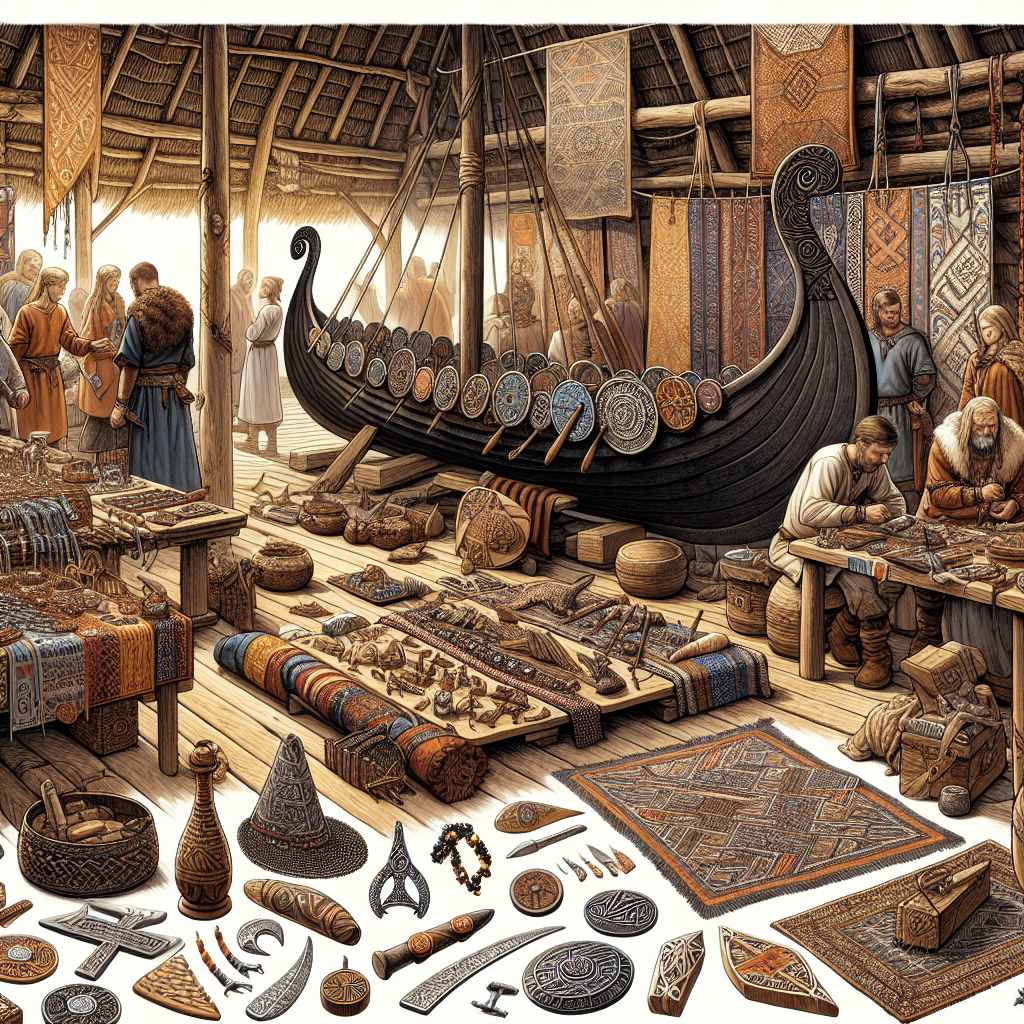Viking Art and Craftsmanship: Exploring Norse Aesthetics
When we think of Vikings, we often imagine longships, horned helmets (even though they never wore them), and fierce warriors. Yet, the Vikings were also skilled artisans, leaving behind a legacy of stunning art and craftsmanship that has fascinated historians and aesthetes alike. The intricate Norse aesthetics not only adorned their everyday objects but also communicated rich narratives of a world where mythology and reality intertwined.
The Unique Characteristics of Viking Art
Viking art is a unique fusion of style and substance, defined by patterns, motifs, and an appreciation for detail. The art was often inscribed on anything the Norse people could get their hands on–from wooden houses to their own warrior bodies. Here are some distinctive features of Viking art:
- Interlace Patterns: These complex weavings of lines are a hallmark of Norse design, seemingly simple yet intricately difficult to master.
- Motifs of Animals and Nature: Vikings mythologized animals like dragons, wolves, and serpents, incorporating them into their artwork to depict power, fear, and reverence.
- Runes and Symbolism: Runes were more than just an alphabet; they represented life events, divine protection, and were often integrated into the art.
The Craftsmen Behind the Beauty
The Vikings were adept craftspersons, specializing in woodwork, metalwork, and textiles. Their craftsmanship wasn’t just about utility; objects were created to convey status, identity, and mythology.
- Woodworking: The Vikings turned ordinary wood into extraordinary creations, crafting everything from ships to kitchen utensils, each piece reflecting the skill of its maker.
- Metalwork: Masters of metallurgy, Norse smiths forged intricate jewelry and weapons, often embedding them with precious stones and intricate filigree using techniques lost to time.
- Textiles and Weaving: The Viking textile work wasn’t only practical but a colorful chant of their culture, utilising vivid dyes and patterns.
Art as Storytelling in Norse Culture
Norse aesthetics served as storytelling tools, preserving myths and heroic sagas in visual form. These stories extended across jewelry, talismans, and even on the prows of ships. Each artifact was a narrative, speaking volumes about the culture’s values and beliefs.
Where Can You Learn More?
For those interested in diving deeper into Viking culture or other educational topics, a plethora of resources are available online. You might find Popular Education Channels on Telegram particularly useful for a broad range of subjects, from history lessons to the latest academic updates.
The Modern Influence of Viking Art
Today, Norse aesthetics continue to inspire contemporary art forms, from tattoos to graphic designs, and even in pop culture representations like video games and movies. So next time you see a Viking symbol pay homage, not just to their warrior spirit but to their artistic soul as well.
In conclusion, Viking art and craftsmanship stand as an enduring testament to the Norse people’s ingenuity and creativity. Their mastery over materials and expression through motifs enrich our understanding of them beyond the typical narrative of warfare and conquest. In the words of a Viking proverb, “Bare is the brotherless back,” reminding us that art, like a good story told among friends, endures.” Wouldn’t it be nice if all our worldly challenges could be solved as beautifully as a carved Viking amulet?
